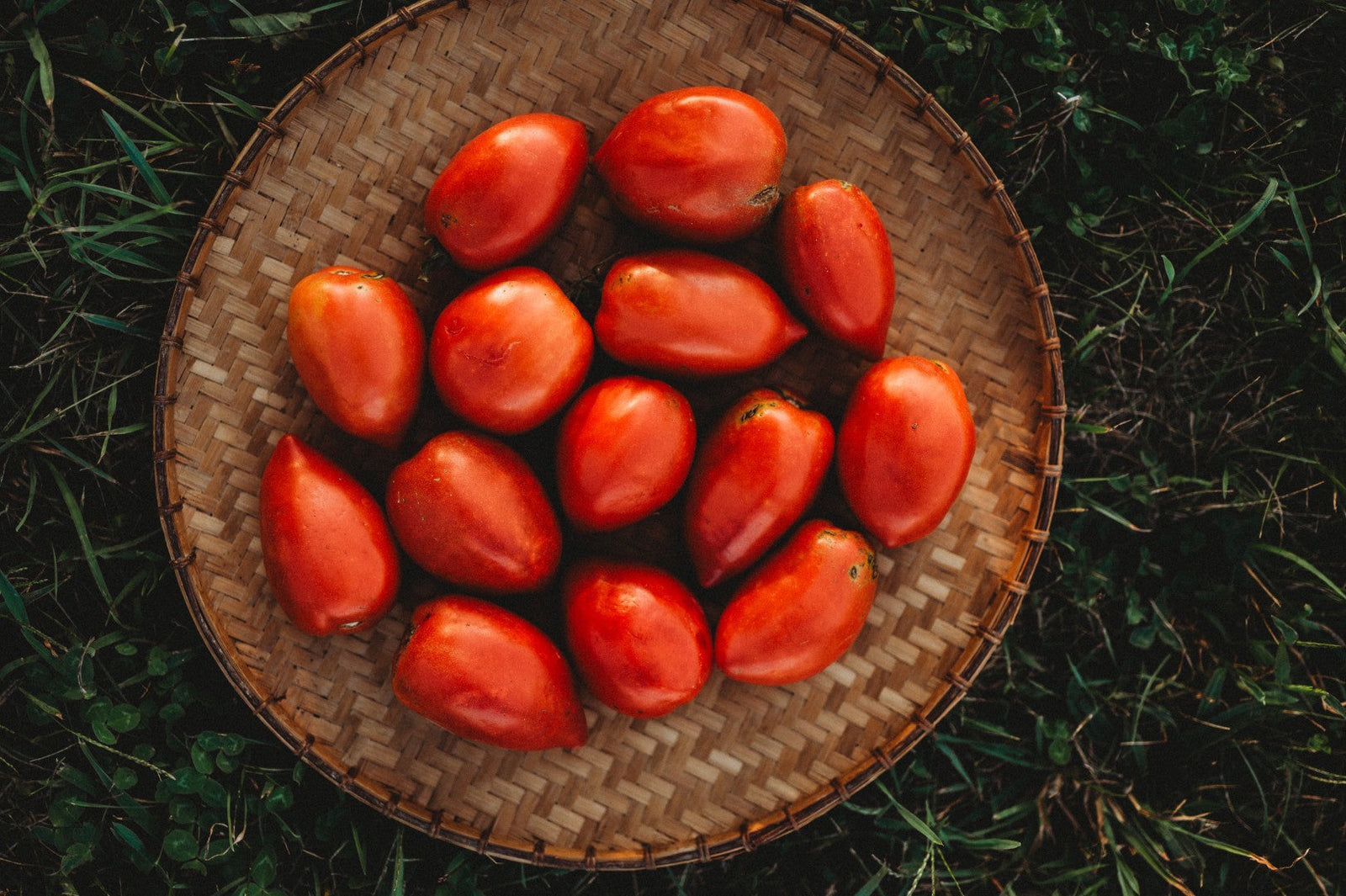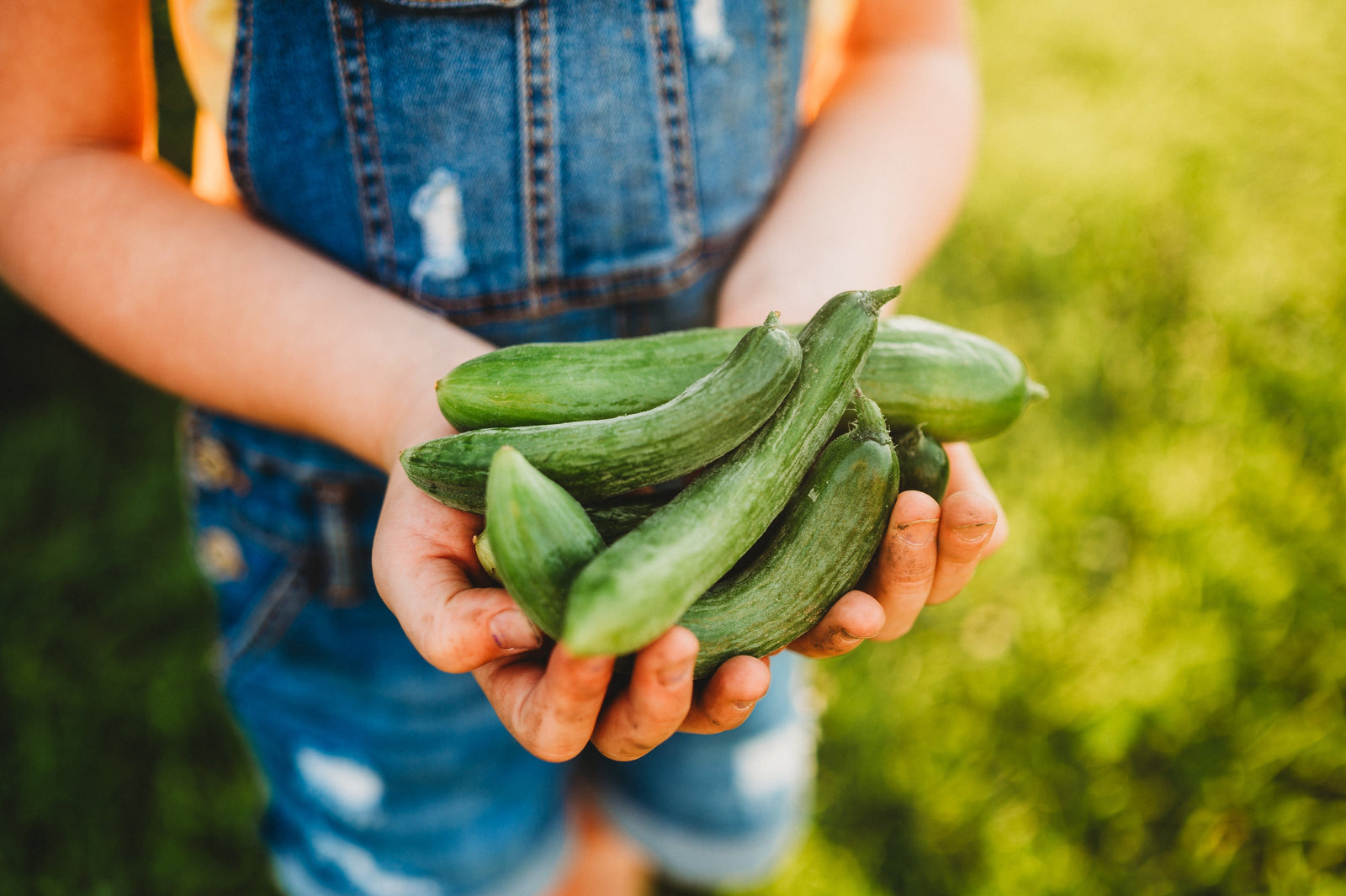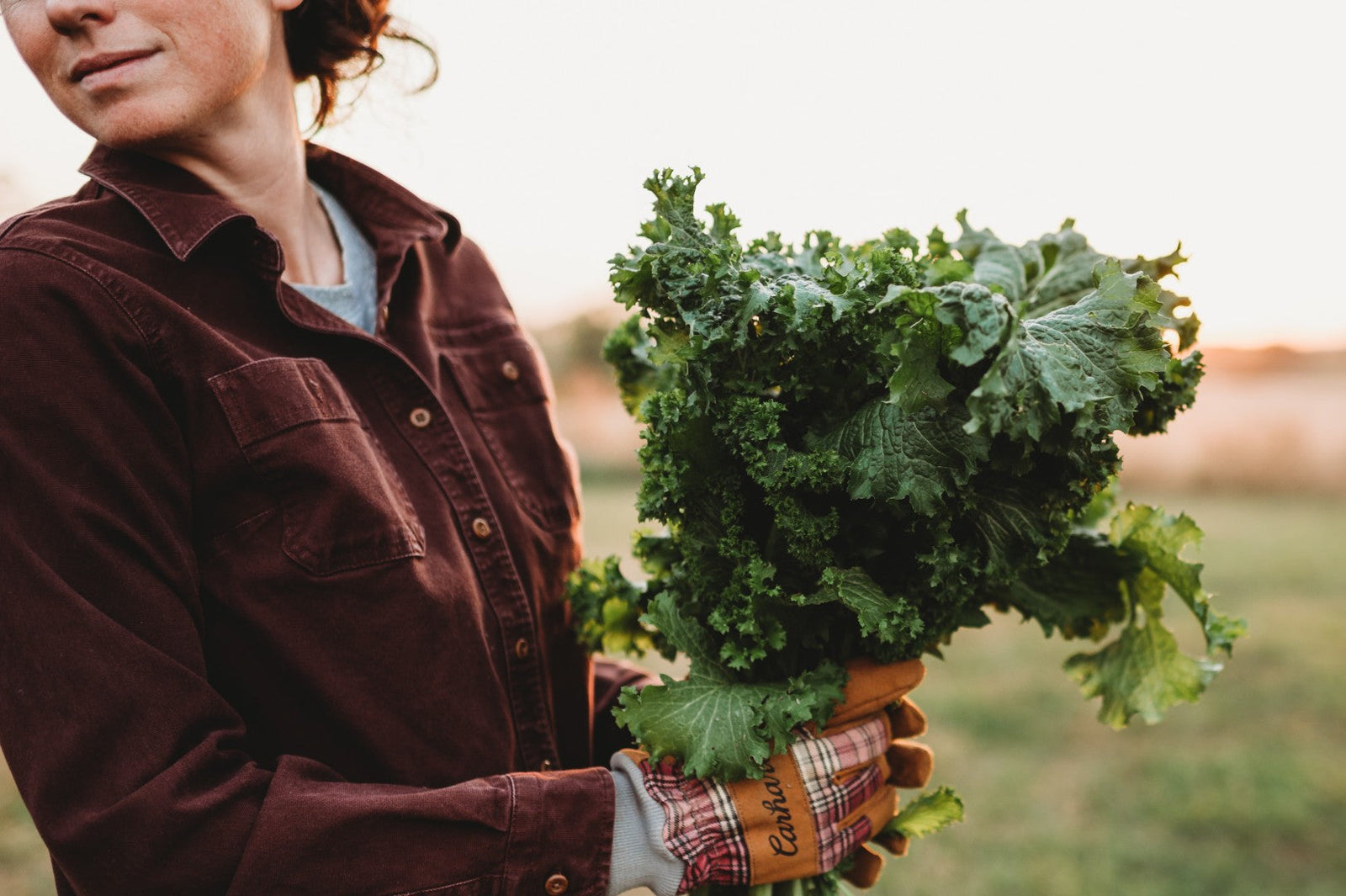There are few times I celebrate the rising cost of groceries—feeding three growing kids will do that to a person—but I have to confess a small guilty pleasure that’s crept into my fall routine. Every year, as the produce aisle fills with pumpkins, gourds, and winter squash, I can’t resist peeking at the price tags. “Organic acorn squash are five dollars each this week,” I’ll announce to my husband, a little too gleefully. “So, I saved us $250 by growing our own.” Sure, he doesn’t exactly reach for his wallet in gratitude, but I still savor the quiet satisfaction. Because I know that with just a little space, a few seeds, and a bit of care, those two humble hills of acorn squash turned into a serious grocery win.
Assuming that you're an acorn squash lover—I mean, why else would you be here?—growing your own acorn squash is, in fact, probably one of the biggest grocery savings that can come from the garden. Few other crops require so little care and churn out so much produce in return—I really did get 50 squash from two hills of plants this year, and with a little preparation and care, you can too.
In this article, we're going to talk all about growing acorn squash—how much space you'll need, our favorite varieties, how to know when they're ready to harvest, and how to cure your acorn squash. So grab your garden planner, dust off your trowel, and get ready to turn a few humble hills into a harvest worth bragging about.

Growing your own acorn squash couldn't be easier. With just a little space and some care you can harvest baskets of acorn squash from your own backyard or patio.
Why Grow Your Own Acorn Squash
So we've already discussed why this gardener grows acorn squash—grocery bill brags, of course. But in all seriousness, there actually are a lot of reasons to grow your own acorn squash. First of all, of course, is the simple fact that the acorn squash you grow yourself are undoubtedly going to be cleaner than the ones you buy from the grocery store.
A quick analysis of the 2020-2023 data from the USDA's Pesticide Data Program reveals that of the 706 winter squash samples they tested, 85% contained at least one pesticide, with the average sample having three different pesticides present. Shockingly, one sample tested positive for 19 different pesticides!
Now, maybe you grow organically and maybe you don't, but regardless of your views on the subject, the point here is that we as gardeners get to decide what is on our food and what isn't—and that, dear gardening friends, is real sovereignty.

Summary of 706 winter squash samples tested by the USDA in the years 2020 through 2023. On the left, half of the samples tested positive for three or more pesticides. The bar graph shows a breakdown of the number of samples with a given number of pesticides present.
And by the way, growing it yourself isn't just about knowing what isn't in your food, but also what is. We are what we eat—and in effect, so are our plants. Every nutrient that ends up in our food starts in the soil (okay, fellow nerds...or the air). Anyway, if calcium, zinc, or boron is deficient in the soil, then it’s deficient in the plant—and, eventually, in us.
In this sense, gardeners who wish to grow the most nutrient dense possible are just a soil test away from doing so. With some thoughtful analysis and careful soil amendment, gardeners are literally able to grow something that money can't buy—ultra nutrient-dense food harvested and consumed at peak freshness.

These Sweet Dumpling acorn squash aren't just beautiful, they're delicious! And because I grew them myself, I know exactly what's in them and more importantly, what isn't.
Choosing the Right Variety
Now that you've decided to grow your own acorn squash, it's important to pick the right variety for you garden—not all acorn squash are created equal. Some are bred for compact spaces, others for productivity or exceptional flavor. Here are three varieties that have earned a permanent spot in my garden—each for very different reasons.
Bush Table Queen
If you’re short on garden room—or gardening on a patio—Bush Table Queen is your friend. Unlike traditional vining squash, this one forms a tidy, compact plant that stays where you put it. I’ve even grown it successfully in a whiskey barrel, where the dark-green fruit tucked neatly beneath the foliage and ripened beautifully. It’s the ideal choice for anyone who wants the satisfaction of homegrown squash without surrendering half the yard.
Gill’s Golden Pippin
When it comes to productivity, Gill’s Golden Pippin takes the prize. From just two hills planted this spring, I harvested at least fifty squash—enough to line the pantry shelves and still have plenty to share. The small, golden fruit have a mild, nutty sweetness and store exceptionally well, making this variety as practical as it is generous. If you’re looking to maximize your harvest (or brag a little about it later), this is the one to plant.
Sweet Dumpling
If you love the idea of a squash that’s as ornamental as it is delicious, Sweet Dumpling is the one to grow. The small, deeply ribbed fruit are creamy white with dark green stripes—so pretty you might hesitate to cook them. But don’t wait too long, because inside is some of the sweetest, smoothest flesh of any winter squash. The flavor is rich and almost chestnut-like, making it perfect for roasting or stuffing.
Thelma Sanders (Missouri Sweet Potato)
Of all the acorn squash I’ve tried, Thelma Sanders stands out for taste. Its rich, creamy flesh has a subtle sweetness reminiscent of a baked sweet potato—no brown sugar required. The tan-skinned fruit are beautiful, too, and the vines are vigorous but well-behaved. If flavor is your top priority, Thelma Sanders will spoil you for store-bought squash forever.

Bush Table Queen (pictured here) is an excellent option for gardeners who are short on garden space. The plants stay compact and bushy, similar in form to a zucchini plant.
How to Grow Acorn Squash
Acorn squash are one of the easiest vegetables you can grow. They’re unfussy, vigorous, and once they get going, they practically take care of themselves. Give them warmth, sun, and a little elbow room, and they’ll reward you with a pantry’s worth of beautiful squash by fall.
When and How to Plant
Acorn squash love heat and absolutely despise cold, wet soil. Wait until all danger of frost has passed and the ground has warmed—ideally to at least 65°F—before sowing. Plant the seeds about 1 inch deep, in small mounds or “hills” spaced 4 to 6 feet apart, depending on the variety. Each hill should hold two to three plants at most; overcrowding is the quickest way to stunt growth and invite disease.
If you’re new to the idea of hilling, it’s simply the practice of mounding up a bit of soil where you plant your seeds. Those raised mounds help the soil warm faster in spring, improve drainage, and keep the roots and crown from sitting in soggy conditions that can cause rot. It’s a simple step that makes a big difference, especially in heavier soils.
Care and Feeding
Once your seedlings are up and growing, they’ll need a steady supply of moisture and nutrients to support their fast growth and heavy fruit set. Deep watering once or twice a week is best, and a side-dressing of compost or balanced organic fertilizer midseason will keep them producing steadily. Although acorn squash can theoretically be affected by pests like squash bugs and vine borers, I rarely find them a serious problem. The borers prefer my Cucurbita maxima varieties, with their large hollow stems, and squash bugs are more of an unsightly nuisance than a true threat.

Acorn squash are very easy to grow and very beginner friendly. With a little water, basic nutrients, and sunshine, you'll soon see their bright yellow flowers giving rise to cute little acorn-shaped fruit.
Mulching and Maintenance
As the vines begin to sprawl, keeping up with weeding becomes challenging—so get ahead of it early. Mulch around the base of your plants with straw, grass clippings, or other materials to conserve moisture and suppress weeds. The mulch will also help keep the fruit clean and dry as they mature.
Pollination 101: What to do when the bees aren't buzzing
Acorn squash produce both male and female flowers, and both are needed for fruit to form. The male blooms appear first and usually outnumber the females, which can make gardeners worry when the vines flower but no fruit sets—don’t panic, the females will follow soon after. You can tell them apart easily: female blossoms have a tiny squash at their base, while males grow on long, slender stems.
Bees usually handle pollination, but if flowers are plentiful and fruit is scarce, you can help. Just pick a freshly opened male flower, peel back the petals, and brush the pollen-covered anther against the center of a female bloom. It only takes a few seconds, and the reward—a plump, perfectly formed squash a few weeks later—is worth it. To encourage natural pollinators, skip insecticides during bloom and plant nearby flowers like zinnias, sunflowers, or cosmos.

It's hard to imagine an acorn squash variety yielding more than Gill's Golden Pippin, pictured here. But if you're short on pollinators and want to maximize your yields, you can always hand pollinate or plant companions to encourage pollinators to visit the area.
Harvest and Storage
One of the most satisfying parts of growing acorn squash is seeing those glossy green fruit ripen into their mature shades by late summer. Harvesting at the right time makes all the difference in both flavor and storage life.
When to Harvest
Traditional acorn squash are ready when the rind has hardened and the spot where the fruit rests on the ground turns from pale yellow to a deep orange. Other varieties like Gill's Golden Pippin and Thelma Sanders do not exhibit the typical green to orange ripening signal. For these, you'll need to use the fingernail test—the skin should be tough enough that your fingernail barely dents it. If you’re unsure, wait a few extra days—once mature, the fruit will hold well on the vine until frost threatens. Use pruning shears to cut the squash from the vine, leaving a sturdy 1-inch stem attached. Avoid carrying them by the stem, as it can snap off and shorten their storage life.
Curing for Longevity
Although acorn squash don’t require a long curing period like some other winter squash, letting them sit in a warm, dry spot (about 80°F) for 7–10 days helps harden the skin and heal small nicks. This brief curing step extends storage life and improves flavor slightly as the starches continue converting to sugars.

Not all acorn squash ripen from green to orange. These Thelma Sanders squash ripen from white to a creamy beige. Judging their maturity is a tactile exercise—press on the skins with your fingernail and select the fruit that dent slightly but don't pierce.
Storing Your Squash
Once cured, store the fruit in a cool, dry place—ideally between 50–55°F with moderate humidity. A basement shelf, pantry, or unheated bedroom often works well. Avoid stacking the squash directly on top of each other; give them a little airflow to prevent soft spots from developing. Properly handled, acorn squash will keep for two to three months, though varieties like Gill’s Golden Pippin often last even longer.
A fun side note: the flavor actually improves in storage. Acorn squash harvested slightly underripe will mellow and sweeten over a few weeks, which makes those chilly November dinners even better.
Cooking Acorn Squash
One of my favorite things about acorn squash is how easy they are to prepare when you’re in a rush. Just split one open, scoop out the seeds, rub the cut sides with a little oil and salt, and you’re ready to roast. Forty minutes later, you’ve got caramelized, golden flesh that tastes like autumn itself.
Acorn squash are endlessly versatile, too. You can stuff the halves with sausage and rice, drizzle them with maple syrup or brown sugar for something sweet, or mash the roasted flesh into soups and purées. Thelma Sanders, in particular, has such a naturally sweet, buttery flavor that it needs almost nothing to shine—just a little salt and pepper will do.

Acorn squash are perfect for those busy fall nights. Just slice in half (this may require a cleaver), remove seeds and coat with oil and salt. Roast cut-side-down on a baking sheet until the skin is tender and can be pierced with a fork.
The Joy of Growing Your Own Acorn Squash
So maybe I didn’t really “save” $250—at least not in the strict accounting sense. But there’s something deeply gratifying about harvesting food that’s beautiful, wholesome, and entirely your own. Every acorn squash stored away in the pantry feels like a small victory: one less thing to buy, one more reminder that the garden still pays dividends long after the season ends.
Whether you grow Bush Table Queen on a patio or let Gill’s Golden Pippin sprawl across the back fence, the reward is the same—fresh, flavorful squash that tastes like fall itself and keeps your family well-fed through the colder months. With a little planning, a few seeds, and a sunny garden corner, you can turn two humble hills into a bounty worth bragging about.
Because at the end of the day, growing acorn squash isn’t just about saving money—it’s about savoring the kind of quiet satisfaction that no grocery store can sell.
Ready to get growing? Find acorn squash, butternuts and more in our unique collection of heirloom squash seeds.






